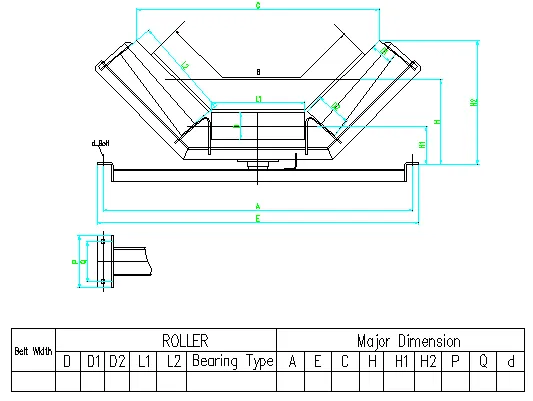 Afrikaans
Afrikaans  Albanian
Albanian  Amharic
Amharic  Arabic
Arabic  Armenian
Armenian  Azerbaijani
Azerbaijani  Basque
Basque  Belarusian
Belarusian  Bengali
Bengali  Bosnian
Bosnian  Bulgarian
Bulgarian  Catalan
Catalan  Cebuano
Cebuano  Corsican
Corsican  Croatian
Croatian  Czech
Czech  Danish
Danish  Dutch
Dutch  English
English  Esperanto
Esperanto  Estonian
Estonian  Finnish
Finnish  French
French  Frisian
Frisian  Galician
Galician  Georgian
Georgian  German
German  Greek
Greek  Gujarati
Gujarati  Haitian Creole
Haitian Creole  hausa
hausa  hawaiian
hawaiian  Hebrew
Hebrew  Hindi
Hindi  Miao
Miao  Hungarian
Hungarian  Icelandic
Icelandic  igbo
igbo  Indonesian
Indonesian  irish
irish  Italian
Italian  Japanese
Japanese  Javanese
Javanese  Kannada
Kannada  kazakh
kazakh  Khmer
Khmer  Rwandese
Rwandese  Korean
Korean  Kurdish
Kurdish  Kyrgyz
Kyrgyz  Lao
Lao  Latin
Latin  Latvian
Latvian  Lithuanian
Lithuanian  Luxembourgish
Luxembourgish  Macedonian
Macedonian  Malgashi
Malgashi  Malay
Malay  Malayalam
Malayalam  Maltese
Maltese  Maori
Maori  Marathi
Marathi  Mongolian
Mongolian  Myanmar
Myanmar  Nepali
Nepali  Norwegian
Norwegian  Norwegian
Norwegian  Occitan
Occitan  Pashto
Pashto  Persian
Persian  Polish
Polish  Portuguese
Portuguese  Punjabi
Punjabi  Romanian
Romanian  Russian
Russian  Samoan
Samoan  Scottish Gaelic
Scottish Gaelic  Serbian
Serbian  Sesotho
Sesotho  Shona
Shona  Sindhi
Sindhi  Sinhala
Sinhala  Slovak
Slovak  Slovenian
Slovenian  Somali
Somali  Spanish
Spanish  Sundanese
Sundanese  Swahili
Swahili  Swedish
Swedish  Tagalog
Tagalog  Tajik
Tajik  Tamil
Tamil  Tatar
Tatar  Telugu
Telugu  Thai
Thai  Turkish
Turkish  Turkmen
Turkmen  Ukrainian
Ukrainian  Urdu
Urdu  Uighur
Uighur  Uzbek
Uzbek  Vietnamese
Vietnamese  Welsh
Welsh  Bantu
Bantu  Yiddish
Yiddish  Yoruba
Yoruba  Zulu
Zulu Cost Analysis of Conveyor Pulley Options for Industrial Applications
The Economics of Conveyor Pulley Price Factors and Considerations
Conveyor pulleys are integral components in material handling systems, playing a crucial role in the transportation of goods across various industries. As a fundamental part of conveyor systems, the price of conveyor pulleys can vary significantly based on several factors. Understanding these factors can help businesses make informed decisions when procuring these essential components.
Types of Conveyor Pulleys
There are different types of conveyor pulleys, including drive pulleys, return pulleys, snub pulleys, and bend pulleys. Each type has its specific purpose in the conveyor system; for instance, drive pulleys are responsible for providing the force to move the conveyor belt. The type of pulley selected can significantly influence its price. For instance, specialized pulleys designed for heavy loads or extreme environments often come at a premium due to their robust construction and durability requirements.
Material Composition
The materials used in the construction of conveyor pulleys also impact their price. Common materials include steel, aluminum, and various polymer composites. Steel pulleys are typically more durable and capable of handling larger loads, making them more expensive than their aluminum or plastic counterparts. The choice of material will depend on the application, the environment in which the pulley will operate, and the desired lifespan of the component.
Size and Specifications
The size of the pulley, in terms of diameter and width, is another crucial factor influencing price. Larger pulleys often require more material and more intricate manufacturing processes, which can drive up costs. Additionally, the specifications such as shaft diameter, face width, and the type of bearing used also contribute to the overall pricing. Custom sizes and specifications are available, but they tend to be at a higher price point compared to standard sizes.
Manufacturing Processes
conveyor pulley price

The manufacturing process used to create conveyor pulleys can vary widely, affecting costs. High-quality manufacturing techniques such as welded construction, precision machining, and surface treatments can increase the durability and performance of the pulleys but also boost their price. For example, pulleys that undergo processes like shot blasting for rust prevention or powder coating for added wear resistance typically come with higher costs due to the additional labor and materials involved.
Market Demand and Supply Dynamics
The cost of conveyor pulleys can also be influenced by market demand and supply dynamics. In times of economic growth, demand for industrial products tends to rise, potentially driving up prices. Conversely, during economic downturns, demand may fall, leading to lower prices. Supply chain issues, such as raw material shortages or transportation disruptions, can also create fluctuations in pricing. Companies need to stay aware of market trends to optimize their purchasing strategies.
Brand Reputation and Warranty
The reputation of the manufacturer can affect the pricing of conveyor pulleys as well. Established brands with a history of reliability and quality often command higher prices due to the perceived value they offer. Additionally, warranties and customer support services can justify a higher price point. Investing in a reputable brand can result in long-term cost savings through reduced maintenance and downtime.
Long-Term Cost Considerations
When evaluating the price of conveyor pulleys, it is essential to consider the long-term costs associated with the product. Cheaper pulleys may seem like a good deal upfront but could lead to higher maintenance costs, more frequent replacements, and increased operational downtime due to failures. Conversely, investing in higher-quality pulleys can enhance efficiency and reliability, resulting in cost savings in the long run.
Conclusion
In conclusion, the price of conveyor pulleys is influenced by a variety of factors, including type, material, size, manufacturing processes, market dynamics, and brand reputation. When procuring conveyor pulleys, businesses should consider not only the upfront costs but also the long-term value that quality components can deliver. By carefully evaluating these factors, companies can make more informed purchasing decisions that align with their operational needs and financial objectives. Ultimately, the right conveyor pulley can play a pivotal role in enhancing the efficiency and reliability of material handling systems.
-
Revolutionizing Conveyor Reliability with Advanced Rubber Lagging PulleysNewsJul.22,2025
-
Powering Precision and Durability with Expert Manufacturers of Conveyor ComponentsNewsJul.22,2025
-
Optimizing Conveyor Systems with Advanced Conveyor AccessoriesNewsJul.22,2025
-
Maximize Conveyor Efficiency with Quality Conveyor Idler PulleysNewsJul.22,2025
-
Future-Proof Your Conveyor System with High-Performance Polyurethane RollerNewsJul.22,2025
-
Driving Efficiency Forward with Quality Idlers and RollersNewsJul.22,2025





























